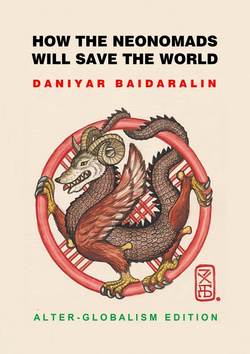Читать книгу How the Neonomads will save the world. Alter-globalism edition - Daniyar Z Baidaralin - Страница 7
THE CONCEPT: EURASIAN NOMADIC CIVILIZATION
Nomadic Dwelling
ОглавлениеMobile dwellings
The Eurasian Nomads also developed an entire new approach to living accommodations and comfort. Most of the EN mobile dwellings represent variations of a tent. There are a few types of these, incorrectly referred to as yurts. I describe this more in detail below in the Appendixes. Here it is sufficient to say that the Kazakhs call a yurt ui and the Mongols call it ger, while the term yurt («jurt» in Kazakh language) refers to a place where our EN ancestors used to put the uis and gers. But for the sake of convenience, I will continue calling it «yurt».
There are a few theories on how the modern-day Turkic (Kazakh, Kyrgyz, Turkmen, Bashkir, and Karakalpak) and Mongol yurts originated. One theory is that they represent a further evolution of a more primitive tepee-like conical tents that still exist in Siberia (chum, yaranga). The simple and narrow conical tents gradually became spacious dome-shaped tents with separate walls and roof. Through a series of improvements they arrived to their modern design. Other theory suggests that they repeat the design of Bronze Age’s stationary wigwam-style houses of the Eurasian agrarian societies. In this theory the early nomads were trying to adjust the old design to new conditions.
Whatever the origin of the yurt is, we know that by the Modern Era the yurts have evolved insomuch that even today we are still discovering their secrets and admire their design and engineering. Today there are modern-day yurts made with traditional materials and technologies, as well as high-tech yurts made with contemporary materials and technologies.
The yurt is mobile, collapsible, portable yet durable, comfortable and universal dwelling. Over the millennia the EN learned to make them climate-proof, wind-proof, and weather-proof; as well as pleasant to spent time in. They allow for a cozy, convenient lifestyle all year round, while living on the move. These are not your typical tourist tents, or even the military tents that are designed to provide for temporary shelter. The yurts are actual permanent houses, richly decorated and well-furnished, warm in winter and cool in summer; the only difference is that they are made to be fully portable.
The yurts were well-equipped with all necessary furniture and household items for a comfortable life, but without unnecessary extra stuff that clutters the houses of the SC peoples. The ground and walls were covered with woven and felt rugs, providing insulation and weatherproofing. The yurt dwellers had small portable tables, compact cabinets, kitchenware and dishware, many bedding items, and sufficient amount of clothes for all four seasons. The nomads rarely used chairs, because they were just an extra weight during the seasonal movements; instead they preferred to seat cross-legged on the rugged floor. The usually slept on soft matrasses that they put right on the floor, only using portable collapsible beds to sleep their kids or elders.
Overall, the yurt is an ingenious invention of the EN, ideally suited for nomadic lifestyle, and perfectly balancing comfort with practicality.
